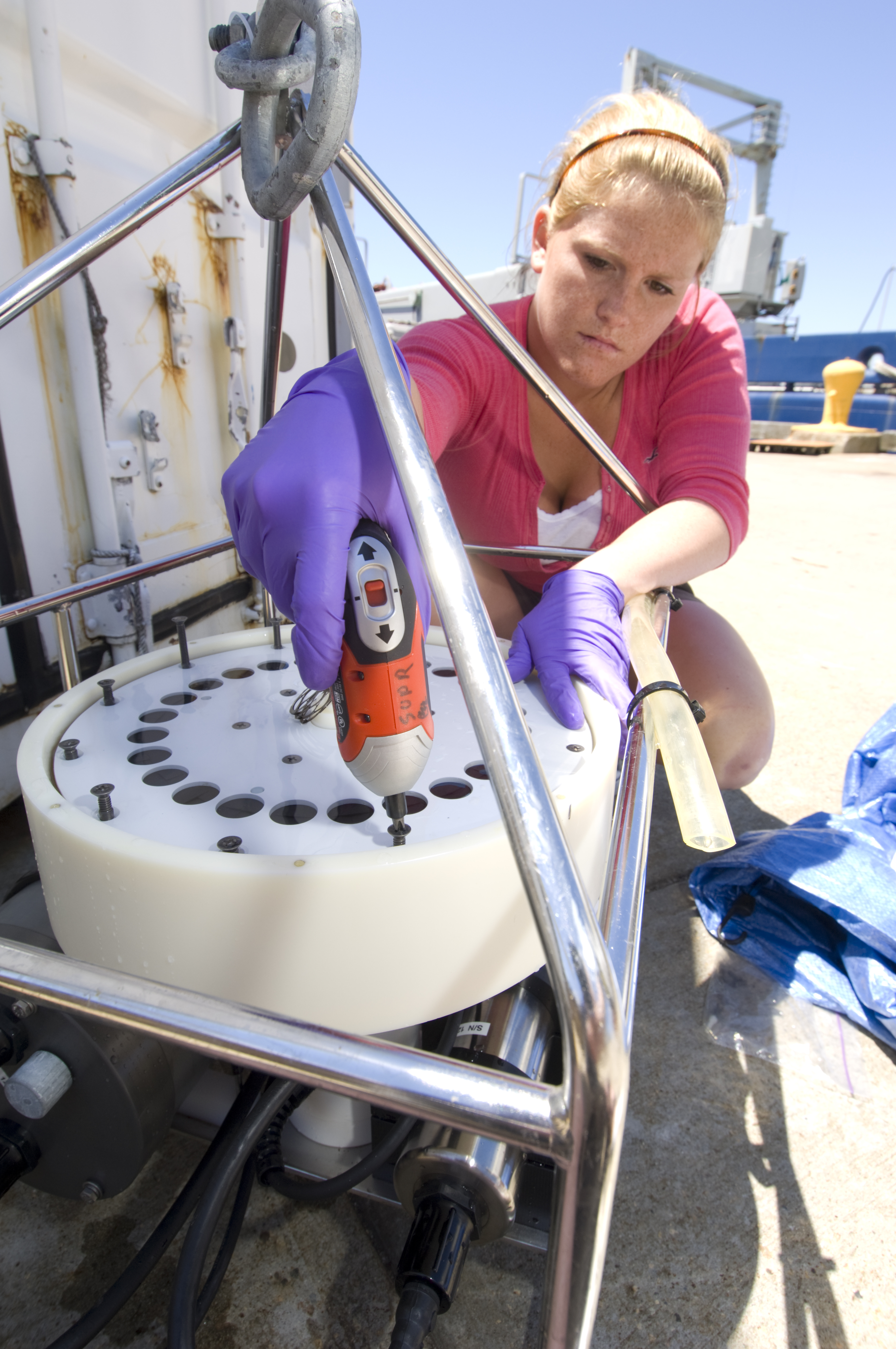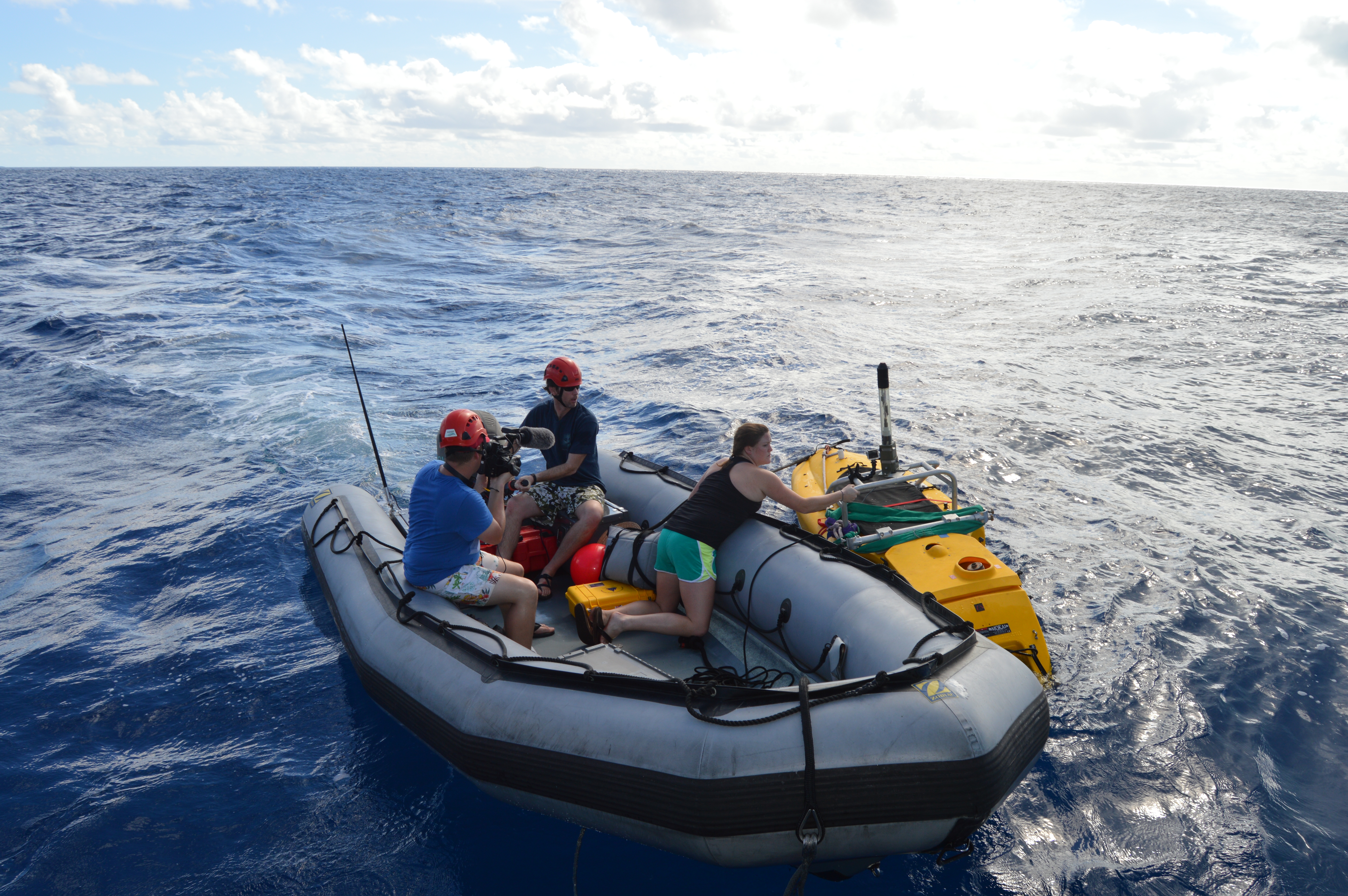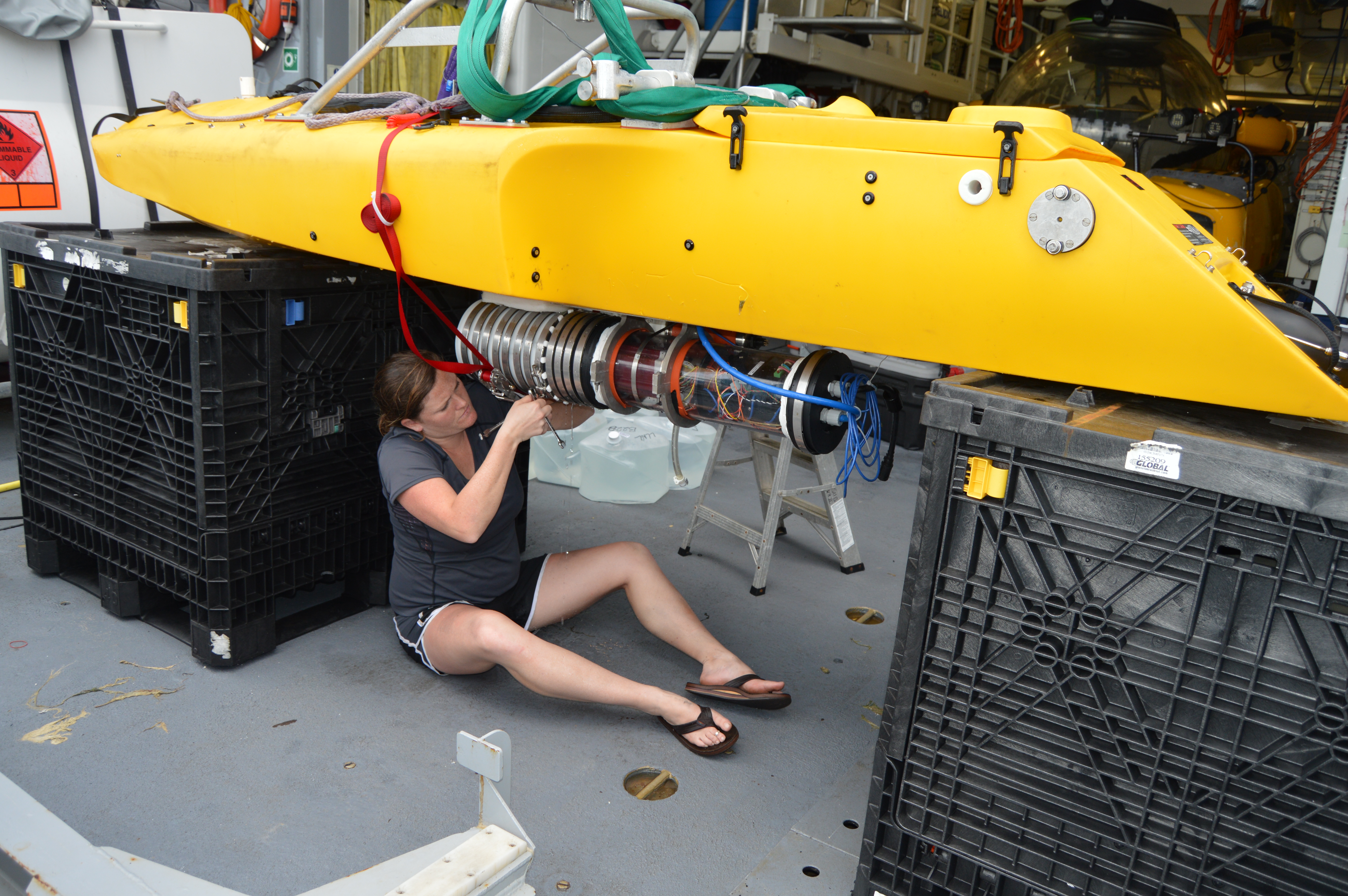SUspended Particulate Rosette (SUPR) Sampler
The SUPR sampler was first designed by Dr. John “Chip” Breier as a Post-Doctoral Fellow in AOP&E back in 2008. It was a large and bulky assembly that took up the entire scientific payload area of the remotely operated vehicles on which it was deployed. In 2014, Dr. Breier tasked me with rethinking the SUPR sampler in a new form-factor: something that was more streamlined, required less, if any, tubing, and could be incorporated onto a variety of autonomous sampling platforms. Throughout the redesign
process, Chip and I met weekly to discuss design goals and review progress, and I implemented our ideas via 3D CAD models.
As before, the newest version of the SUPR sampler consisted of a single rotating valve that can select one specific flow path in order to enable discrete sample collection. The new version of the SUPR sampler would have 18 ports, as opposed to the 14 ports on the original ROV version of the sampler. This version of the sampler also did away with the cumbersome, leak-prone, and potentially contaminating tubing and connections. This required a complete redesign of the filter holders that would be used with the new
valve. The new valve also utilized ball bearings to help reduce the torque on the stepper motor that drives the positioning of the internal plates and the selection of the flow path and corresponding sample. It was designed to drive the valve and gear plates via a direct drive motor, rather than the previous offset
version, eliminating the occurrence of gear backlash and reducing the risk of torque related failures. Finally, the completely uniform and cylindrical form-factor of a whole SUPR sampler enabled its use on many different vehicle platforms.
The entire design took us just four months to model, complete the drawing package, and fabricate. While Dr. Breier had originally envisioned the sampler for use in deep ocean waters, some additional funding through the Dalio Foundation necessitated its use in shallow lagoon waters on a surface platform, the “Jetyak”; an autonomous kayak developed by engineers here at WHOI. The mission was a collaboration with Dr. Ken Buesseler and Dr. Matt Charette on a radionuclide sampling expedition to the Marshall Islands. I worked with Dr. Buesseler to make a few modifications to the SUPR sampler in order to accommodate vials of his radionuclide binding resins, and we tested the new SUPR sampler on the Jetyak in January 2015 (d). The mission was successful and we were able to prove an instrument such as the SUPR sampler could be used to autonomously sample for radionuclides in ocean waters, minimizing the risk to humans from radiation in the event of a Fukashima-type accident.
Since its first deployment in 2015, the SUPR sampler has had a few minor modifications made and has been used on the Clio AUV on 11 dives to varying depths, successfully filtering large volumes of water and preserving the samples via RNAlater injection in-situ for subsequent analysis in the lab. A second generation of the Clio version of SUPR is currently being developed for use on a new mesopelagic autonomous vehicle, “Mesobot,” as well as the recently designed mid-water towed optical-acoustic
vehicle, “Deep-See.”


